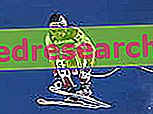Liver cirrhosis is a chronic IRREVERSIBLE disease characterized by degeneration, hardening, scarring and functional loss of liver cells.
The onset of liver cirrhosis is potentially influenced by diet.
Causes of liver cirrhosis
Liver cirrhosis can have multifactorial causes and according to them, the diet plays a more or less important role in the pathological course:
- HBV (hepatitis B virus) or HCV (hepatitis C virus) infection *
- Alcohol abuse *
- Autoimmune diseases (autoimmune cirrhosis and primary biliary cirrhosis)
- Metabolic disorders (Wilson's disease and hemochromatosis)
- Vascular diseases (which generate stasis or blood stagnation in the liver)
- External toxic agents and / or drugs
* overall due to 90% of cases of liver cirrhosis in Italy

Symptoms and complications
Initially, liver cirrhosis is an asymptomatic disease; the early diagnosis of this stage, otherwise called compensated cirrhosis, is fundamental to the success of the therapy. The removal of the etiological agents and the adoption of a diet for cirrhosis are fundamental, even if the hypertension of the portal vein (pathological modification from which all the others originate) is of modest entity, and the portion of active hepatocytes is able to comply with the functions of those definitively dead.
If no therapy or diet is carried out for liver cirrhosis, portal vein pressure would continue to increase and active hepatocytes would decrease in number until they were insufficient; the first symptoms of advanced cirrhosis of the liver are:
- Anorexia
- Weight loss
- Loss of muscle mass
In the event that the degeneration becomes complicated, the next stage is called decompensated cirrhosis ; the symptoms are:
- Jaundice and itching
- Increase in abdominal volume (ascites)
- Edema in the lower limbs
- Changes in coagulation, easy bleeding (ecchymoses and petechiae).
The most serious complications of liver cirrhosis mainly concern the accumulation of intraperitoneal fluid (ascites) due to reduction of the osmolar protein portion of the blood and possible infection (peritonitis), formation of varicose veins and possible rupture with gastro-intestinal hemorrhage, hepatic encephalopathy (due to alteration). of blood composition), hepatorenal syndrome (renal failure secondary to cirrhosis), hepatocarcinoma (liver tumor) and portal thrombosis.
Treatment of liver cirrhosis
The treatment of liver cirrhosis involves:
- Removal of the patient from risk factors and from etiological ones
- Balanced and specific diet (proper protein / amino acid and sodium dietary intake)
- Use of drugs to reduce complications of cirrhosis (eg ascites diuretics)
- Rest in bed (which facilitates venous return)
- Evacuative paracentesis (procedure through which, using a syringe and a needle, the ascitic fluid contained in the abdominal cavity is taken; when taking only a few cubic centimeters of liquid in order to analyze it the paracentesis is called exploratory . If the abdominal fluid is abundant and creates a sense of swelling, larger quantities can be taken and the procedure is called evacuative paracentesis).
Although hepatic cirrhosis is an irreversible and often fatal course of illness (high correlation between liver cirrhosis and hepatocellular carcinoma), if well treated, it is possible to slow down the degenerative progression and favor the indispensable regeneration of the liver; obviously, this depends on the state of the disease, therapy and the primary causative agent. In the case of alcoholic cirrhosis, the definitive suspension of the abuse involves a GREATER restoration of liver function compared to the treatment of other cirrhotic forms.
In a state of compensated cirrhosis, it is sufficient to eliminate the etiological agent (antiviral treatment, elimination of alcohol, elimination of toxic substances or drugs) and restore a balanced diet.
The diet for compensated cirrhosis, in addition to scrupulously respecting all the requirements for a healthy and correct diet, must be particularly careful to guarantee a protein intake of about 1.2g / kg of body weight; in the event of loss of appetite, integration can be useful. On the contrary, the diet for decompensated cirrhosis depends very much on the subject's clinical conditions; secondary complications significantly affect health status and often require the adoption of artificial nutrition. It is the case of encephalopathy, which requires protein reduction up to 0.5g / kg in order to improve the nitrogen balance, or hepatorenal syndrome, which on the contrary increases the requirement as it favors the protein excretion of plasma with urine. In the absence of encephalopathy it is recommended to maintain a protein intake of about 1.5g / kg.
Curiosity
It has been shown that the diet for liver cirrhosis can significantly improve the symptoms of encephalopathy following the replacement of the AROMATIC amino acids with branched chain amino acids, thanks to the reduction of nitrogenous waste and the improvement of the overall nitrogen balance. This results in a potential increase in the amino acid ration necessary to comply with the major plastic requirements of the cirrhotic with encephalopathy and secondary renal failure.
Another fundamental precaution to follow in drawing up the diet for liver cirrhosis is the restriction from sodium food. The excess of this trace element promotes the worsening of ascites and in 10-20% of patients the dietary correction allows the disappearance of the effusion; on the contrary, the sodium defect can negatively affect kidney function. Ultimately, in the diet for liver cirrhosis it is strongly recommended to limit the intake of food sodium to no more than 40mEq / day (920 mg / die = 2.3 grams of sodium chloride) but not to fall below 20mEq / day (which would also significantly affect the cost of the special diet).
Bibliography:
- SINPE Guidelines for Hospital Artificial Nutrition 2002
- Liver cirrhosis in clinical practice - G. Laffi, G. La Villa - SEE Florence - page 184; 391
- Complete treatise on abuses and addictions - U. Nizzoli, M. Pissacroia - Piccin - pag 984



